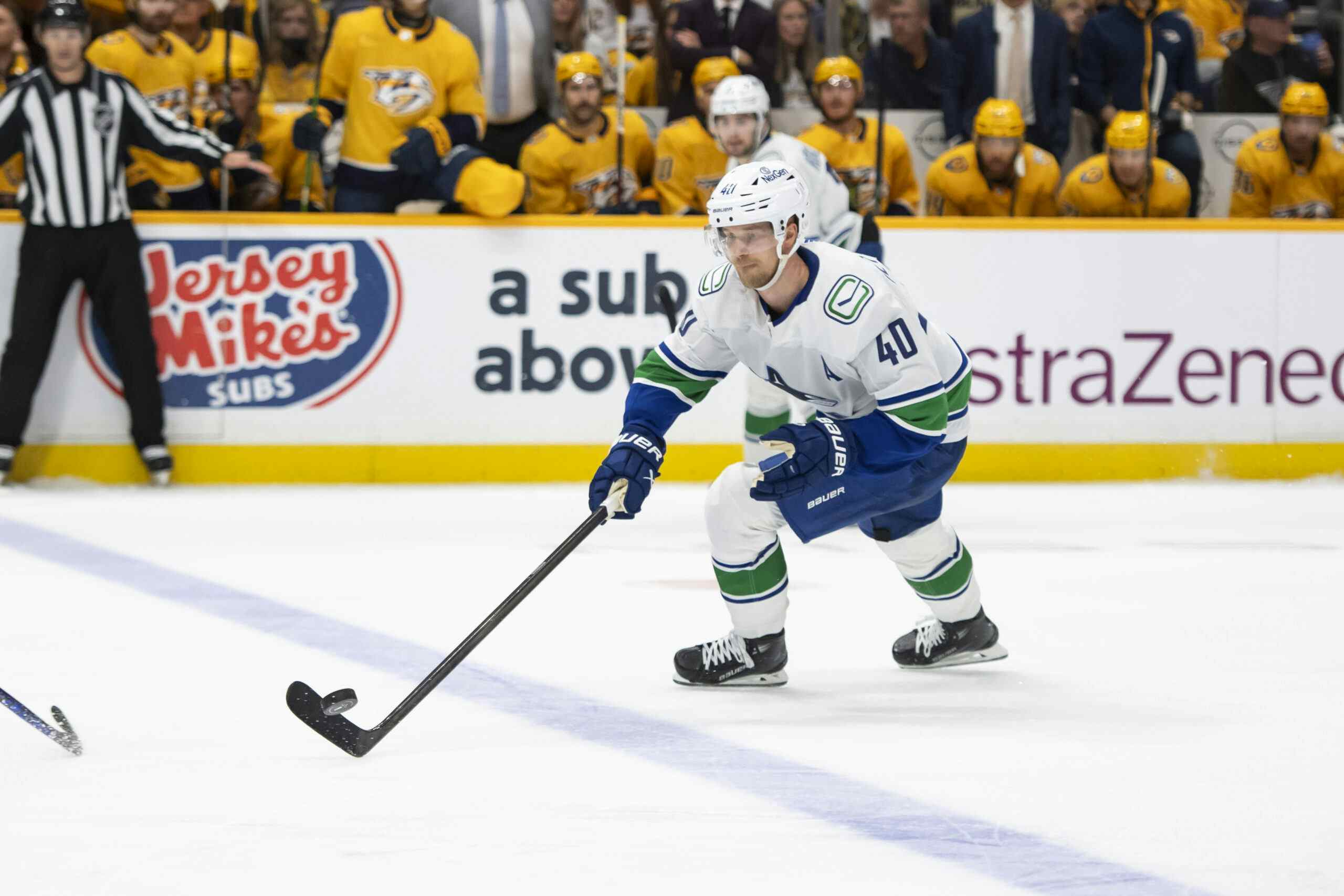NHL Draft: Mike Gillis and Player Size

What is behind the curtain for the Canucks at the 2012 NHL Draft? And will Gillis continue to target hefty forwards?
The debate about whether or not there’s an inherent advantage to drafting "big players" is a contentious one. While there is no correlation between size-advantage and teams that win championships and no apparent pattern either way, the heaviest 5% of drafted players do significantly outperform the rest of their cohort (that last link is to an ESPN Insider article, you have to pay up if you want to read it). Despite conflicting evidence, Bruins General Manager Peter Chiarelli – clearly one of the smartest General Managers in the league, except for his total inability to sign Chris Kelly to a reasonable and legal contract – spoke openly about looking to draft bigger players at the MIT Sloan Conference earlier this year.
One of the important things to remember about the draft is that there are very few executives who are good at it. That isn’t reflective of 30 General Managers drafting players incorrectly necessarily, it’s just that drafting eighteen and nineteen year-olds (outside of the top-ten, essentially) is a total crap-shoot. In limited information situations, finding a workable approach that can yield even a slight edge – be it a "Fishing Hole" league that you’re particularly good at evaluating talent in, or drafting exclusively younger players or heavier players – is potentially very valuable, especially in a salary-capped league where parity rules.
Short of picking first overall, there aren’t any "silver bullets" in terms of a guiding draft philosophy that will always pay dividends. But whether or not drafting players based on size is the "right" approach, let’s take a look at Gillis’ draft record through this lens. Read past the jump for more.
There are several overarching trends that Mike Gillis has exhibited at the draft table over the past four seasons. First off, at every draft since he became Canucks General Manager, Gillis has selected a goaltender late in the draft (the earliest being raw but super athletic Czech puck-stopper David Honzik in the 3rd round last season). Secondly, he’s never drafted any type of positional player, except for a forward, in the first round of the draft.
While the Vancouver sports media is happy to remind us that Gillis has yet to draft a player who has made a regular impact at the NHL level (aside from Cody Hodgson), those trends hint at a solid understanding of positional value, and development risk. Avoiding selecting defenseman early makes good sense: blueline prospects take longer to develop and are riskier picks. Never taking a goaltender in the first two rounds is a solid guiding philosophy as well, above average goaltending can usually be had for cheap on the open market, and projecting amateur goalies is completely impossible.
In terms of player size, the average forward drafted by Mike Gillis weighs 191 pounds at the Draft. The average Gillis drafted defenseman has weighed a paltry 187 pounds at the Draft (well below league average). That would indicate to me that Gillis hasn’t looked to draft "heavy players" in particular during his tenure, but I also think there’s more going on here.
Let’s look at the evolution of Gillis’ drafting. With the tenth overall pick in 2008 Gillis selected 6 foot, 185 pound center Cody Hodgson, and he took two more forwards that year in the middle rounds: Prab Rai (5,11 191 pounds) and Mats Froshaug (6,1 198 pounds). The next year (2009), he selected 5,8 175 pound center Jordan Schroeder with his first round pick, then picked Swedish speedster Anton Rodin (5,11, 174 pounds) in the second round. He didn’t draft another forward that year until the seventh round, when the team picked Stephen Anthony who stood 6 foot 3 inches and weighed 205 pounds on his draft day.
In 2010, Gillis largely burned his entire draft on Andrew Alberts and Keith Ballard. The Canucks selected four players total, and only one forward: the recently signed Alex Friesen, who was 5,8 the day he was drafted, and weighed in at a stocky 186 pounds.
Those seven forwards (Hodgson, Rai, Froshaug, Schroeder, Rodin, Anthony and Friesen) had an average weight of 188 pounds, and an average height of five foot, 11.14 inches.
Which takes us to the most recent draft, 2011, where Gillis selected 5 forwards: Nicklas Jensen (6,2, 202 pounds), Alexandre Grenier (6,5, 200 pounds), Joseph Labate (6,4, 190 pounds), Ludwig Blomstrand (6,1, 198 pounds) and Pathrik Westerholm who is 6 feet tall and weighs 187 pounds. The average height and weight of Gillis’ most recent class of forwards? 195 pounds, standing over 6 foot and 2.4 inches tall.
There’s a pretty sizable difference in the weight and height of the forwards that Gillis targeted in his first three drafts, compared with his most recent one. When you consider that Gillis subsequently traded for 215 pound power-forward David Booth just a few months later, then moved the svelte Cody Hodgson in exchange for a behemoth in Zack Kassian – there appears to be a new trend emerging.
Basically since the 2011 draft (which incidentally took place just a handful of days after the Canucks lost to the "big bad" Bruins in the 2011 Stanley Cup Final), Gillis has seemed to target big, heavy wingers, both at the draft and on the trade market, in a way he previously didn’t.
This is by no means definitive, it’s too early to know whether or not Gillis and the Canucks were just addressing an area of perceived need and will go back to drafting undersized skill forwards, or if he’s more widely altered his approach. For all we know, this is just a coincidence, and perhaps Vancouver will select 5,8 140 pound forward Austin Czarnik in the second round this year… But I’d be pretty surprised.
Recent articles from Thomas Drance





